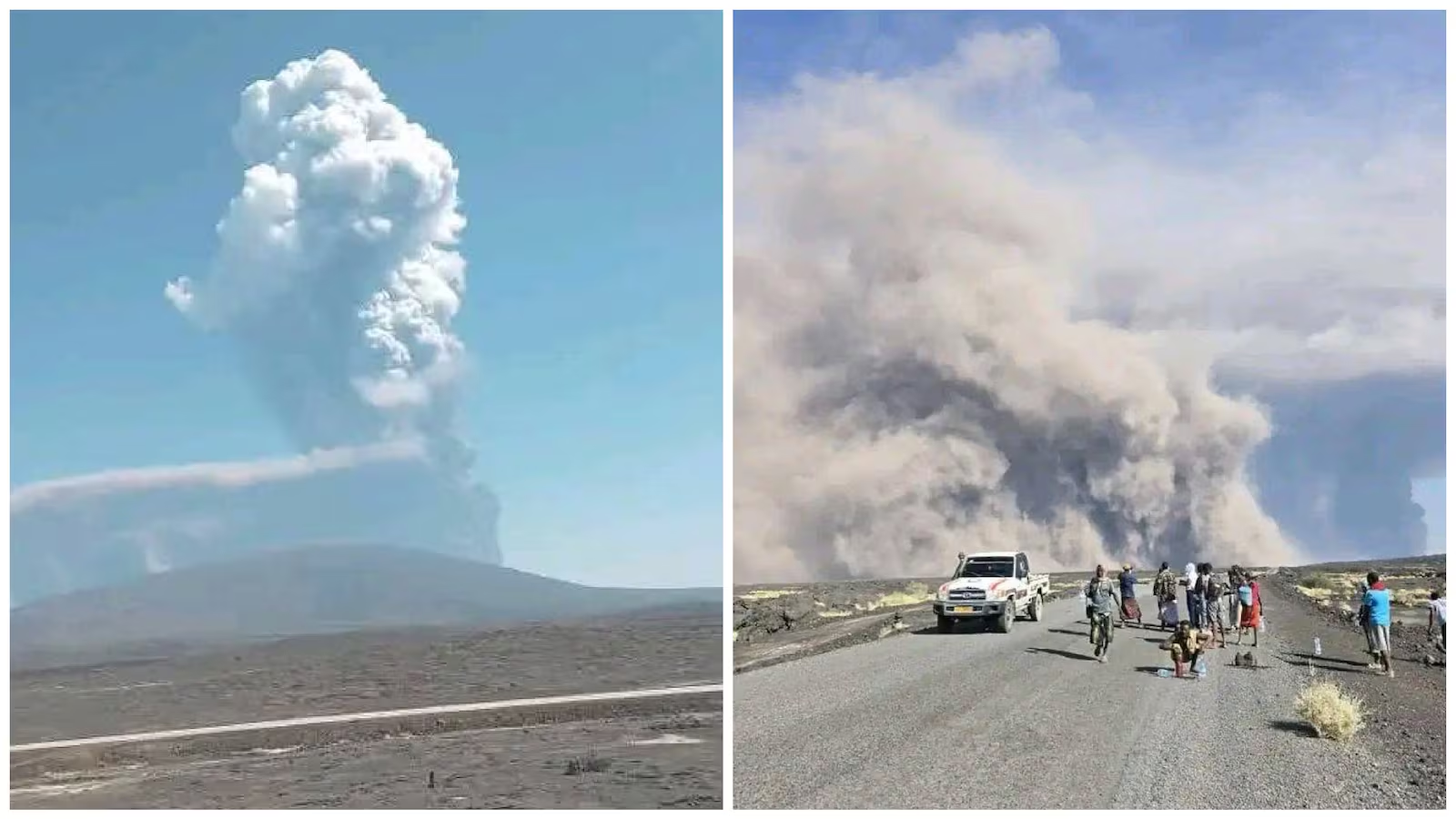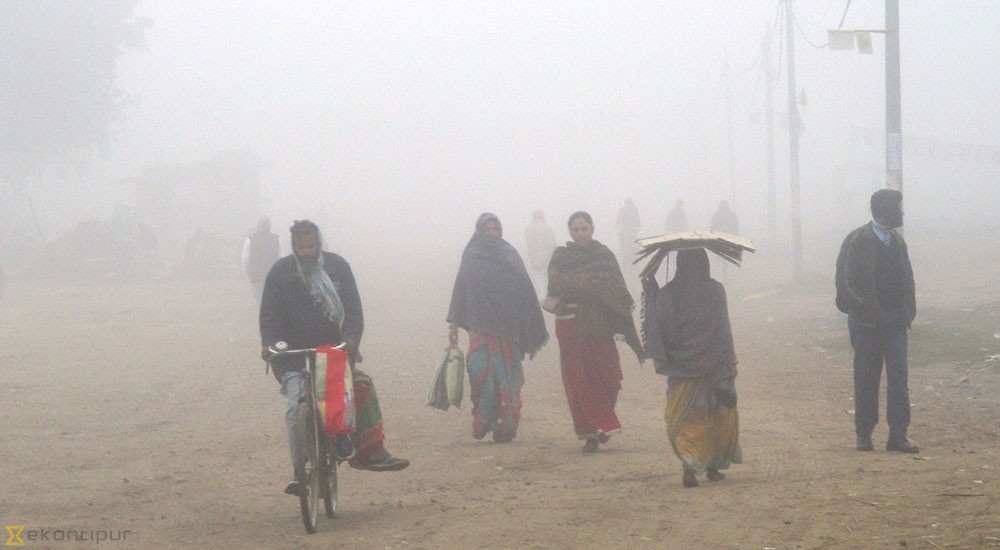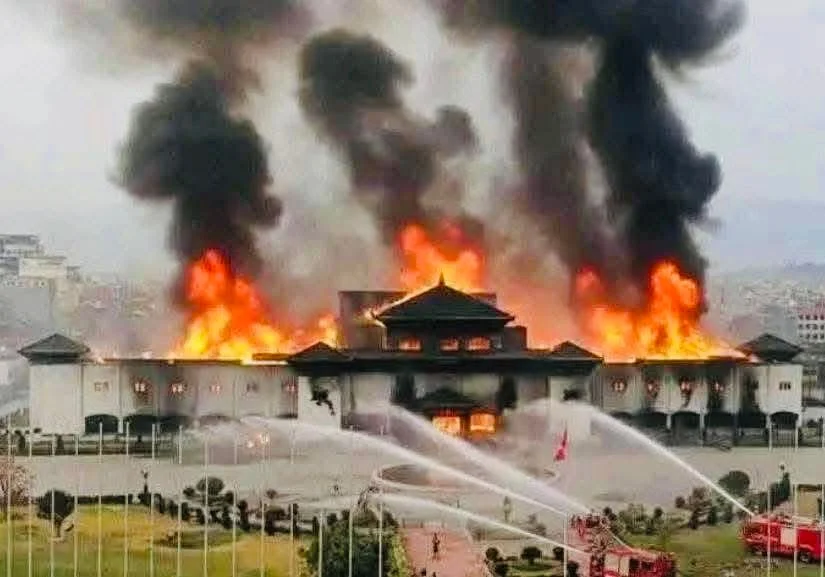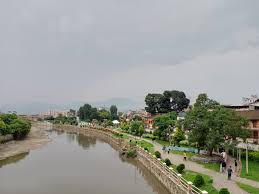
Kathmandu, Nov 26:Ash and smoke from a volcano that erupted in Ethiopia on Sunday morning have traveled across Yemen, Oman, Pakistan, and India, reaching Nepal. The eruption of the Hayli Gubbi volcano, active for the first time in nearly 12,000 years, produced a massive cloud of ash, smoke, and minerals.
Meteorologist Binod Pokharel said that although the ash cloud has entered Nepal’s airspace, it remains 10–15 kilometers above sea level, too high to affect air quality or daily life. He expects the cloud to linger until Wednesday. However, because it flies at heights used by commercial aircraft, flights could be disrupted. India has already reported delays and cancellations of domestic and international flights on Monday and Tuesday due to the ash cloud.
Director General of the Indian Meteorological Department, Mrityunjay Mahapatra, told BBC that the cloud might temporarily affect satellite and flight operations but is unlikely to impact weather, air quality, or the environment significantly.
Volcanic ash poses the biggest threat to aircraft engines. The fine particles, composed of hard silicates, can melt inside jet engines under high temperatures and solidify again, potentially blocking airflow and causing engine failure. While engines may restart after cooling, in-flight or landing scenarios could be dangerous. Ash can also damage external surfaces, windshields, sensors, and navigation systems, and if it enters cabin ventilation, it could pose breathing risks to passengers and crew.
Detecting ash clouds is challenging as they often resemble normal clouds, though particles can create a faint glow around aircraft, prompting pilots to alter course and reduce speed. Historical incidents include the 2010 Iceland volcano eruption that halted European flights for two weeks, and a 1982 British Airways flight that lost all four engines over Indonesia but landed safely after restarting. The International Air Transport Association notes that volcanic ash has never directly caused human casualties or plane crashes.
Nepalese climate expert Nabin Singh Khadka noted that when the ash cloud hits the Himalayas, dust, ash, and minerals could accumulate, potentially accelerating glacial melt, though the risk is minimal. Experts also caution that if the volcano erupts again, the path of the ash cloud could change.
The ash cloud from northeastern Ethiopia reached 14 kilometers high, moving at 100–120 km/h, carrying ash, sulfur dioxide, and tiny rock and glass particles, which can darken the sky and necessitate flight delays or rerouting. In India, it spread over Gujarat, Rajasthan, Maharashtra, Delhi, Haryana, and Punjab before entering Nepal.
People’s News Monitoring Service



















Comments:
Leave a Reply